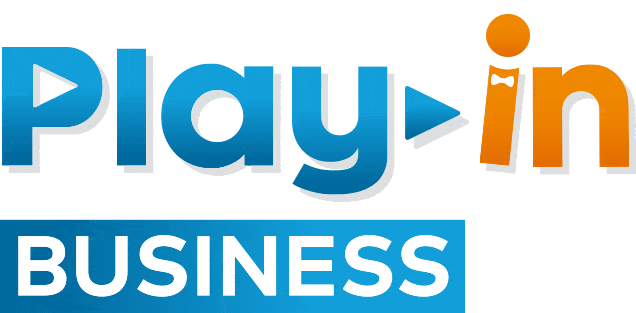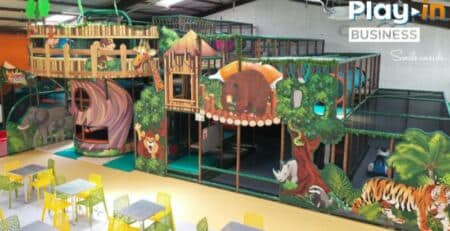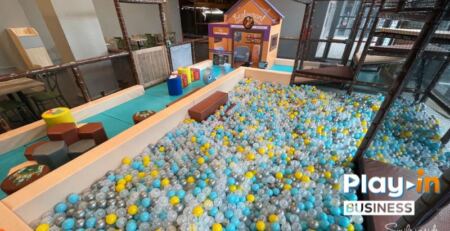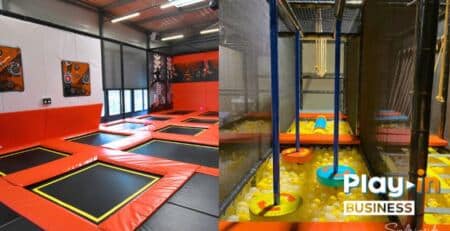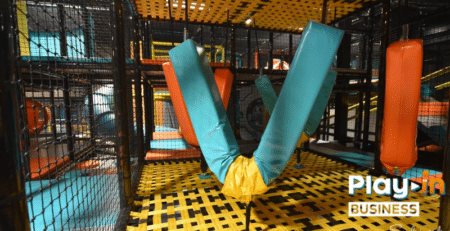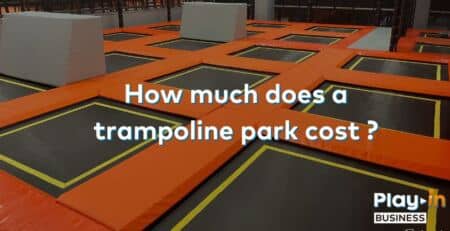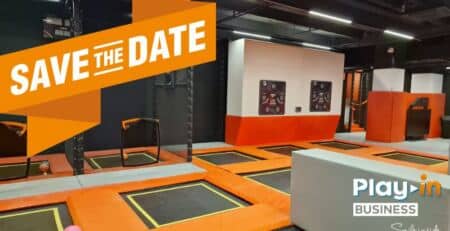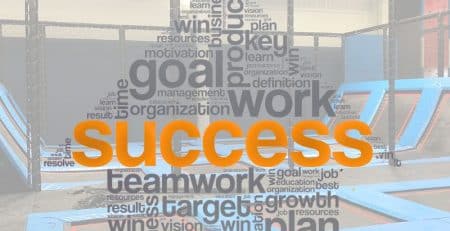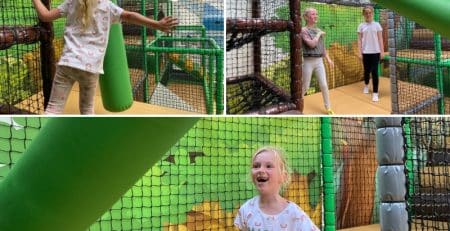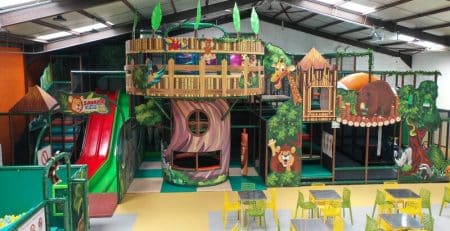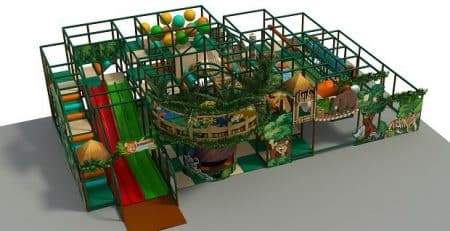Open a professional indoor playground: complete guide
Opening a professional indoor playground is an exciting adventure. This type of business attracts not only families looking for fun and safe activities for their children, but also day camps, holiday camps, corporate committees, and schools wanting to offer both educational and fun outings.
However, succeeding in this field requires more than just an idea and a passion for games. It involves meticulous planning, judicious investments, and careful attention to every detail. From market research to facility design, including legal and administrative aspects, each step plays a crucial role in the success of your professional playground.
Follow us in this complete guide, let’s get started!
Why open a professional indoor playground?
 Strong demand: Indoor playgrounds meet a growing demand, especially in certain municipalities and urban areas where the supply is not sufficiently developed. Urban areas, often characterized by limited outdoor spaces, see a strong demand for indoor alternatives. In many municipalities, particularly those developing or on the outskirts of large cities, leisure facilities for children are scarce. Families living in these areas actively seek options to entertain their children in a safe and fun environment. Indoor playgrounds also offer an ideal solution against the whims of the weather.
Strong demand: Indoor playgrounds meet a growing demand, especially in certain municipalities and urban areas where the supply is not sufficiently developed. Urban areas, often characterized by limited outdoor spaces, see a strong demand for indoor alternatives. In many municipalities, particularly those developing or on the outskirts of large cities, leisure facilities for children are scarce. Families living in these areas actively seek options to entertain their children in a safe and fun environment. Indoor playgrounds also offer an ideal solution against the whims of the weather.
Diversified income: One of the main advantages of this type of business is the possibility of generating diversified income, in addition to traditional ticket sales:
- Birthdays and private events: Renting rooms for birthday parties and other private events can be a substantial source of income.
- Catering services: Offering snacks, drinks, and even full catering can attract more visitors and extend their stay, thereby increasing on-site consumption.
- Activities and workshops: Organizing educational workshops, themed evenings, or special events can attract a regular and loyal clientele.
- Subscriptions and passes: Offering monthly subscriptions or multi-visit passes can encourage repeat visits and ensure a stable source of income.
Community impact: A well-managed professional indoor playground can quickly become a valuable asset for the local community. By providing a space where children can play safely, learn, and socialize, you contribute to the well-being and development of the local youth. Additionally, these spaces can also serve as meeting places for parents, thus fostering social fabric and strengthening the sense of community.
Steps to open a professional indoor playground
Market study and business plan
 Demand analysis: To assess the viability of your professional indoor playground, it is crucial to understand the local demand by conducting a market study. Start by analyzing the demographics of your target area. Look for areas with a high concentration of families with young children, schools, and nurseries. Also, examine existing competitors: how many indoor playgrounds are there already? What is their attendance? What services do they offer? This analysis will help you identify market gaps and opportunities to stand out.
Demand analysis: To assess the viability of your professional indoor playground, it is crucial to understand the local demand by conducting a market study. Start by analyzing the demographics of your target area. Look for areas with a high concentration of families with young children, schools, and nurseries. Also, examine existing competitors: how many indoor playgrounds are there already? What is their attendance? What services do they offer? This analysis will help you identify market gaps and opportunities to stand out.
Market segmentation: Clearly identify your target audience. The main segments can include:
- Families with young children: Parents looking for safe places where their children can play and socialize.
- Schools, nurseries, and specialized institutions: Establishments looking for educational and fun outings.
- Community organizations: Local groups like associations, holiday camps, and day camps organizing events for children.
 Business plan: A solid business plan is essential for the success of your project. It should include:
Business plan: A solid business plan is essential for the success of your project. It should include:
- Initial costs: Detailed estimate of startup costs, including land purchase, construction or renovation and building layout, equipment purchase, furniture, kitchen, fire extinguishers, etc.
- Revenue forecasts: Revenue projections based on demand analysis and pricing of your services.
- Marketing strategies: Detailed plan of your strategies to attract and retain customers, including digital marketing like social networks, community events, and local partnerships.
Choosing the location of your professional indoor playground
 Accessibility: The location of your playground is crucial. Choose a visible site, easily accessible, ideally close to major transport routes and with sufficient parking to accommodate your customers. The convenience of access will greatly influence the attendance of your playground.
Accessibility: The location of your playground is crucial. Choose a visible site, easily accessible, ideally close to major transport routes and with sufficient parking to accommodate your customers. The convenience of access will greatly influence the attendance of your playground.
Space and layout: Ensure that the space of your professional indoor playground is large enough to accommodate various play areas and equipment. A well-thought-out layout should allow for smooth circulation and include areas for different age groups and types of play. For example, you can include a toddler area for the little ones, a play area for older children, as well as a relaxation and dining area for parents with comfortable chairs.
Safety and standards: Make sure the chosen building meets all current safety standards. It should be adaptable to meet the specific requirements of professional indoor playgrounds.
Design and theming
Space design: Work with professionals like Play In Business to design a space that is both attractive and functional. The goal is to create an engaging environment that will entice children to return, along with their families.
 Theme: Choose a coherent and attractive theme that will appeal to children and parents. A well-defined theme will enhance the visitor experience and make your playground memorable. Think of themes like jungle, forest, circus, robot world, or a mini city.
Theme: Choose a coherent and attractive theme that will appeal to children and parents. A well-defined theme will enhance the visitor experience and make your playground memorable. Think of themes like jungle, forest, circus, robot world, or a mini city.
Zoning: Separate areas based on ages and types of play. For example:
- Toddler area: With games suitable for children aged 0 to 3 years.
- Modular play area: More physical activities for children aged 4 and up.
- Trampolines: For older children and teenagers.
- Ninja Warrior: For active and adventurous children.
Selecting and purchasing equipment
 Quality and safety: Invest in high-quality equipment that meets current safety standards. Safety should be your top priority to prevent accidents and reassure parents. At Play In Business, we are committed to providing quality equipment designed to be both durable and safe. By choosing our equipment, you benefit from our expertise in safety standards and excellent value for money, ensuring a safe and attractive professional playground for all users.
Quality and safety: Invest in high-quality equipment that meets current safety standards. Safety should be your top priority to prevent accidents and reassure parents. At Play In Business, we are committed to providing quality equipment designed to be both durable and safe. By choosing our equipment, you benefit from our expertise in safety standards and excellent value for money, ensuring a safe and attractive professional playground for all users.
Variety: When you open your professional indoor playground, offer a variety of activities to maintain children’s interest. Consider including slides, ball pits, interactive games, climbing walls, ninja warrior, role play areas, construction zones with giant blocks, trampolines, etc.
Legal and administrative aspects
Permits and licenses: Obtain all necessary permits and licenses to open your professional indoor playground. This may include building permits, operating licenses, and health authorizations.
 Insurances: Take out adequate insurance to cover accidents, civil liability, and material damage. Make sure you are covered for all possible scenarios to protect your playground.
Insurances: Take out adequate insurance to cover accidents, civil liability, and material damage. Make sure you are covered for all possible scenarios to protect your playground.
Regulations: Comply with all local safety and hygiene regulations. Stay informed about current laws and standards and ensure your facility is always compliant.
Hiring and training staff
Recruitment: Hire qualified staff passionate about working with children. Look for candidates with experience in animation, education, or similar roles. You can offer part-time annualized contracts to adjust the number of employees to the expected attendance.
Training: Train staff in the use of equipment, safety procedures, and first aid before opening. Proper training will ensure that your team is ready to handle all situations and provide a positive experience for your customers.
Marketing and communication to open your professional indoor playground
 Marketing strategy: Develop an effective marketing strategy to attract your target audience. Use various channels such as digital marketing, social networks like Facebook, Instagram, LinkedIn, TikTok, local advertising (press, billboards, buses…), and partnerships with restaurants, shops, pediatricians, schools, nurseries…
Marketing strategy: Develop an effective marketing strategy to attract your target audience. Use various channels such as digital marketing, social networks like Facebook, Instagram, LinkedIn, TikTok, local advertising (press, billboards, buses…), and partnerships with restaurants, shops, pediatricians, schools, nurseries…
Online presence: Create an attractive website and use social networks to promote your playground. Ensure that your site is optimized for search engines (SEO) and provides all the necessary information for your customers.
Opening event: Organize an opening event to attract your first customers and create buzz around your new business. Consider special activities, discounts, or partnerships with local media to maximize your visibility.
Managing and maintaining your professional indoor playground
Maintenance: Implement a regular maintenance plan to ensure the safety and longevity of the equipment. Regularly inspect the facilities and make repairs as soon as necessary.
 Customer management: Use management software to control customer flows (entries/exits), track reservations, orders, stock, and customer feedback. A good management system will help you stay organized and provide quality customer service.
Customer management: Use management software to control customer flows (entries/exits), track reservations, orders, stock, and customer feedback. A good management system will help you stay organized and provide quality customer service.
Evaluations: Regularly collect customer feedback to continually improve your services. Use satisfaction surveys, online reviews, and interviews to understand your customers’ needs and expectations.
Ready to open your professional indoor playground?
 Opening a professional indoor playground is an ambitious but rewarding project. By following these steps, you can create an attractive, safe, and profitable space that becomes a popular destination for families and local communities. Contact us! For more information on our consulting and professional indoor playground construction services, visit our website or contact us directly. At Play In Business, we are here to turn your vision into reality.
Opening a professional indoor playground is an ambitious but rewarding project. By following these steps, you can create an attractive, safe, and profitable space that becomes a popular destination for families and local communities. Contact us! For more information on our consulting and professional indoor playground construction services, visit our website or contact us directly. At Play In Business, we are here to turn your vision into reality.
For those considering this type of investment, it is also essential to understand the costs associated with setting up and managing an indoor playground. To learn more about the financial aspects, read our next article: How much does an indoor playground cost? This guide will provide valuable information on initial expenses, operating costs, and other tips.
